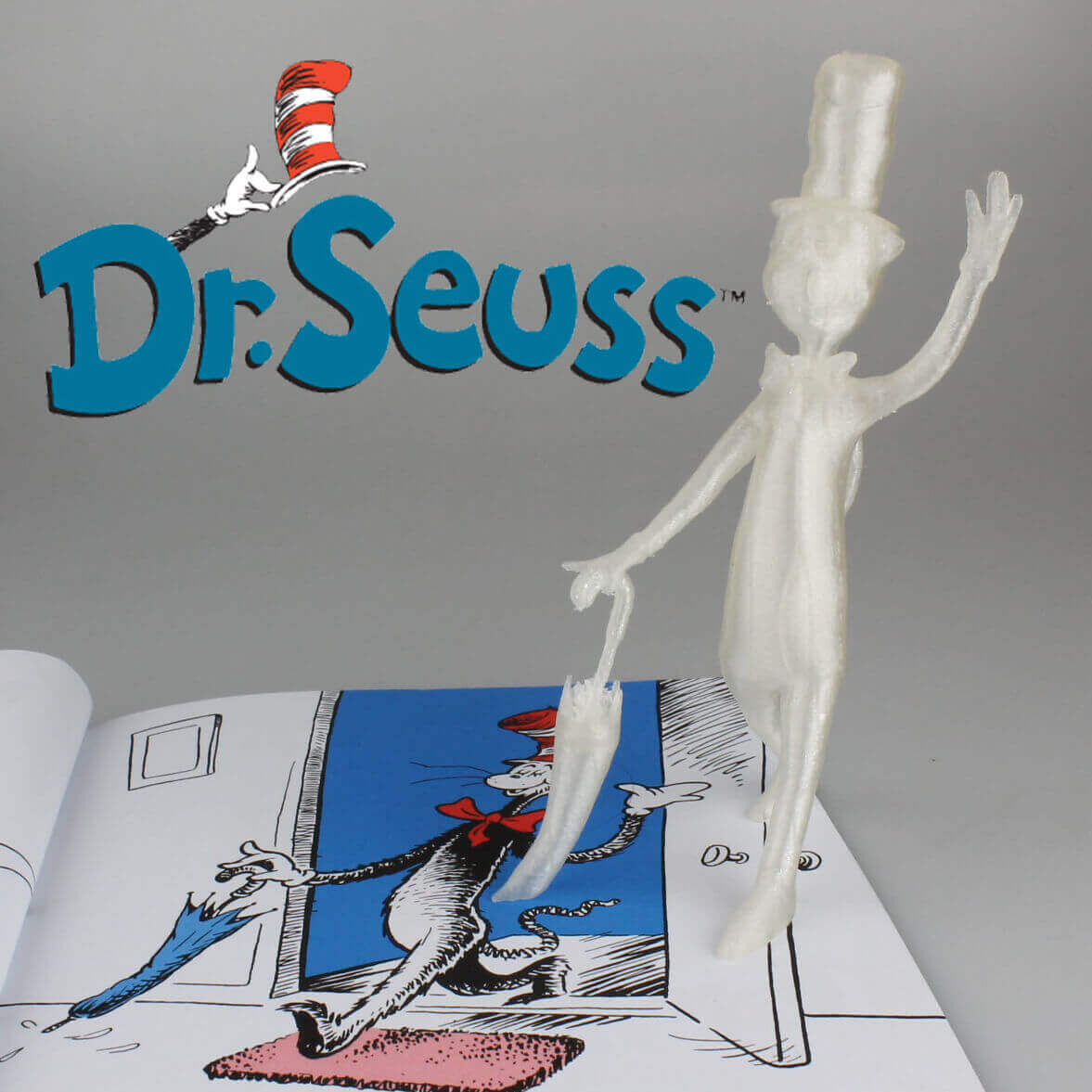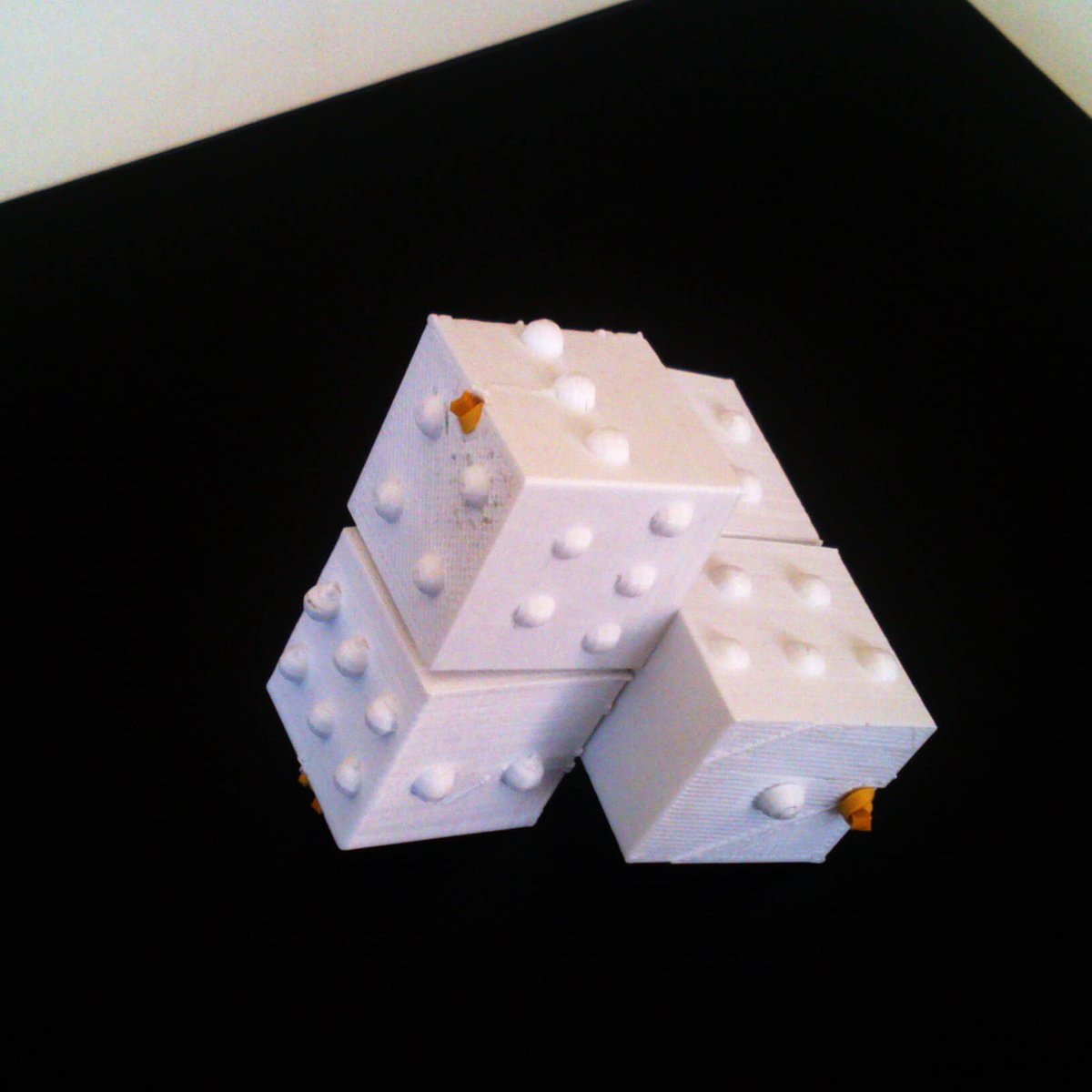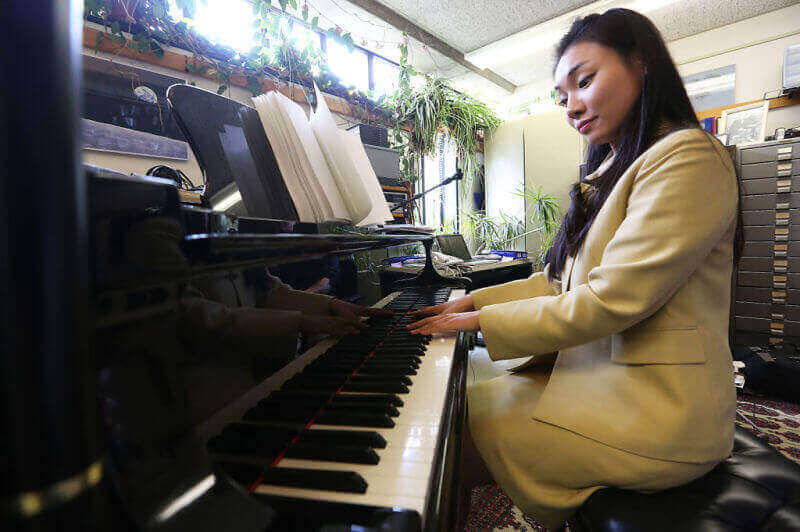People who are blind or partially-sighted are given greater support and accessibility thanks to 3D printing. A list of our favorite projects.
As the name implies, 3D printing is technology with a tangible and tactile byproducts. They’re physical objects, designed to be held and touched, and perhaps even have a functional use. If you just want something to admire on a shelf, you’re better off framing a photograph.
And while additive manufacturing has been deployed to remarkable effect in many different projects and purposes — from cosplay to healthcare, from toys to education — perhaps the demographic that is the most empowered are the blind and visually impaired.
Here’s a selection of the innovative ways how 3D printing is used to help the visually impaired engage with the world around them. From upgrading a Rubik’s Cube with braile characters, to keeping cherished memories alive via scuplture, this is 3D printing with a purpose.
#1: Cat in the Hat Book Illustrations
Designer Nik Shavorich is a big fan of the books of Dr. Seuss, to the extent that he’s shared printable models of characters and objects from children’s classic “The Cat in the Hat”. It’s a storytelling aid, where kids can feel as well as hear the situations described to them.
Explaining his motivation, Shavorich said: “The initial concept behind transforming the illustrations from 2D to 3D is to create resources to improve the experience of literature for the blind and partially sighted through rendering illustrations and graphics from well-known fiction into tactile objects and reliefs.”
You can find this adorable print, as well as others in the series, from MyMiniFactory.
#2: The Little Prince Book Illustrations
https://youtu.be/zkM-HjZq6Fs
“The Little Prince” is another enduring classic of children’s literature. With such visually arresting source material, it makes total sense that the quirky illustrations in the book would be transformed into 3D printable objects. The models are free to download, but they can also be bought and delivered ready printed. Check out these fantastic designs here.
#3: Tactile Maps
Undergraduate Jason Kim and mechanical engineer Howon Lee came up with a 3D printed map for the students of Joseph Kohn Training Center in New Brunswick, New Jersey. The Center is a state-funded facility that teaches vocational skills to the blind and visually impaired. Previously, pld wooden maps used to help the students navigate the halls, but Kim and Lee came up with a better 3D printed alternative which students could carry around with them. You can read the full story here.
#4: Tactile Artwork
https://youtu.be/GOF4Ipvjp8A
The Unseen Art project aims to make classic works of art more accessible, and they’re making it happen using 3D printing. Unseen Art have worked on modeling the Mona Lisa at a series of depths, and then tested groups to determine which is the most “visible” based on touch.
In addition, Unseen Art plan to make the models freely available, so that they can be downloaded and printed by anyone with access to a 3D printer. As they explain on their website: “Re-create classical art paintings in 3D so that they may be touched and felt, both in exhibitions and in people’s homes. Creating equal access for art globally is our passion and goal!”
#5: Braille Sudoku
This design for a Braille Sudoku board is the result of an experiment conducted with 33 students between two high schools in Ioannina, Greece. Students were asked to design and 3D print creative artefacts, most of them carrying messages in braille language. The objects were then shared with blind children, as a way to encourage a new spirit of collaboration between blind and non-blind people.
You can read more about the experiment here, as documented in Science Direct. You can also see more of the designs on the classroom blog, and download this Sudoku design from MyMiniFactory.
#6: Braille Rubik’s Cube
This piece was also created as part of the project above. This faces of this Rubik’s Cube are covered in Braille characters, so that blind and partially sighted folks can properly distinguish each facet of the cube. You can find this design on MyMiniFactory, or check out another version here.
#7: Connect Four
Connect Four is an extremely popular tabletop game for two players, now upgraded so that it’s playable by the blind. Simone Fontana is the designer, and he’s promised that more designs in a similar fashion will be available in the near future. Check out this design on MyMiniFactory.
#8: Touchable Yearbook
Many blind students do not have the luxury of high school yearbooks, because they cannot see. 3D TEK in Korea came up with an innovative solution to this problem. They worked with the Seoul National School for the Blind and invented the Touchable Yearbook.
The way it works is by using 3D scanning and 3D printing to replicate the faces of graduating students. They then showcased the yearbook for the first time on the graduation day, which gathered more than 2,000 people. Now the students can recall the faces of friends even after graduation as long as they keep the yearbook. Make sure to watch the touching video above. Full Story on The Telegraph.
#9: Braille Picture Books
The Tactile Picture Books Project is led by computer science professor Tom Yeh. The project transforms standard books into 3D printable tactile picture books. One prominent example is “Goodnight Moon” in 2014, a book which had already sold 40 million copies worldwide before being turned into a tactile book.
Caleb Hsu, who worked on the 3D printed story of Noah’s Ark, said: “I am struck by how deeply concerned the teachers for the visually impaired were with the individual needs of each child, because the creation of the tactile picture book for Noah’s Ark required some relinquishing of my own personal agenda. Instead of making a model that was beautiful and interesting to a pair of eyes, I was learning to consider the needs of others in an attempt to make something useful and educational to a pair of hands.”
As 3D printing becomes more common, fabricated a tactile book will become more easily accessible to blind children and adults everywhere. You more about story here.
#10: Tactile Stave Notation
Tactile Stave Notation works as 3D printed sheet music which has the notes and staff slightly elevated from the surface. This allows visually impaired music students to “read” the notes at the same time as the teacher is playing it, so students won’t have to memorize the music before they begin.
Todd Welbourne, a piano professor at the UW-Madison, said: “The (Braille) letter system is already very complicated. And then to have the symbols also mean something else, to mean music, can be very confusing to a kid.” Read the full story here.
License: The text of "10 Ways 3D Printing Supports the Blind" by All3DP is licensed under a Creative Commons Attribution 4.0 International License.






